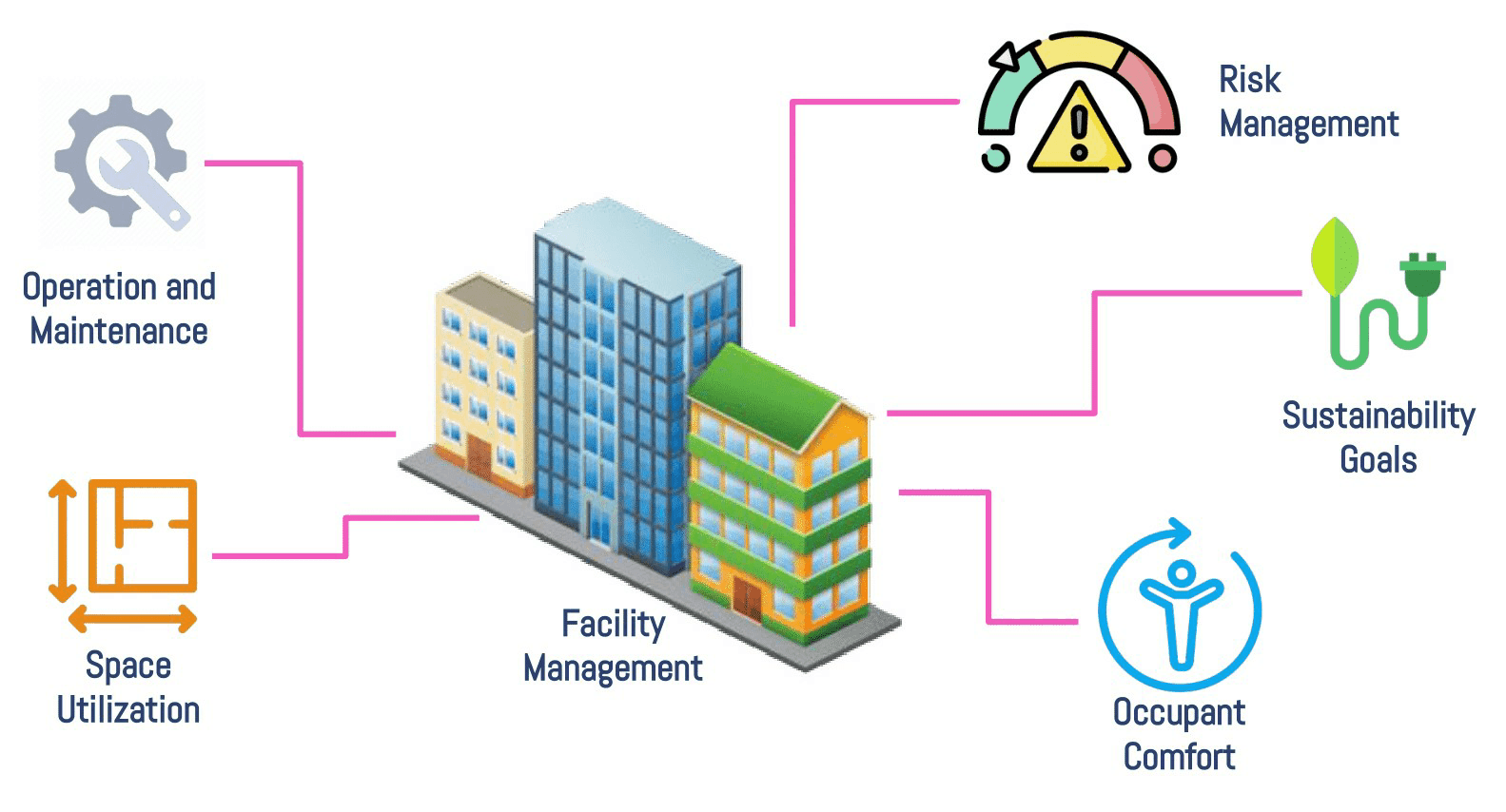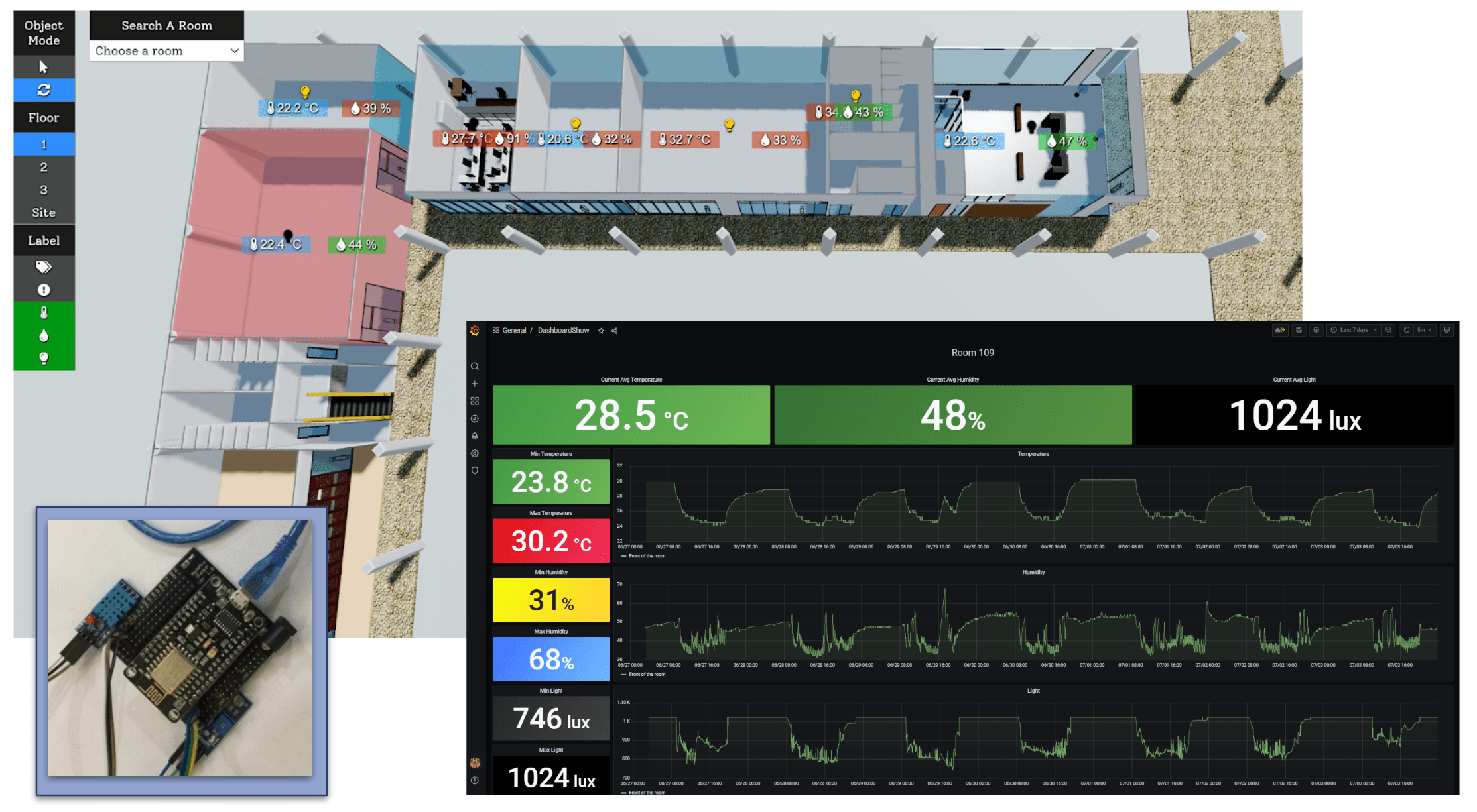A Digital Twins Prototype for CSTU Building
This project presented the development of a proof-of-concept digital twin for managing and maintaining a computer science building, integrating real-time data from IoT sensors, cameras, and facility management APIs. The digital twin processes data across both edge and cloud environments using machine learning models to generate insights for optimizing building operations. By leveraging edge computing, the system ensures real-time processing and efficient resource utilization, overcoming the limitations of cloud-only approaches. Our work highlights the importance of decentralized data processing in smart buildings and demonstrates practical applications within a real-world university setting.

Figure: Higher-level goals for smart building digital twins.
Key contributions and findings from this project include:
- Demonstrating a real-world digital twin with multiple use cases, including environmental monitoring, surveillance, and facility issue tracking.
- Utilizing edge computing to enhance response time for real-time applications.
- Integrating diverse data sources, such as building sensors, third-party applications, and user-reported issues, into a unified framework.
- Providing insights and lessons learned for designing digital twins in smart buildings, contributing toward a universal framework for future implementations.Figure: The 3D Building Information Model. Inset pictures show corresponding real-world locations.

Figure: IoT sensors for monitoring indoor environment and the time-series data dashboard.